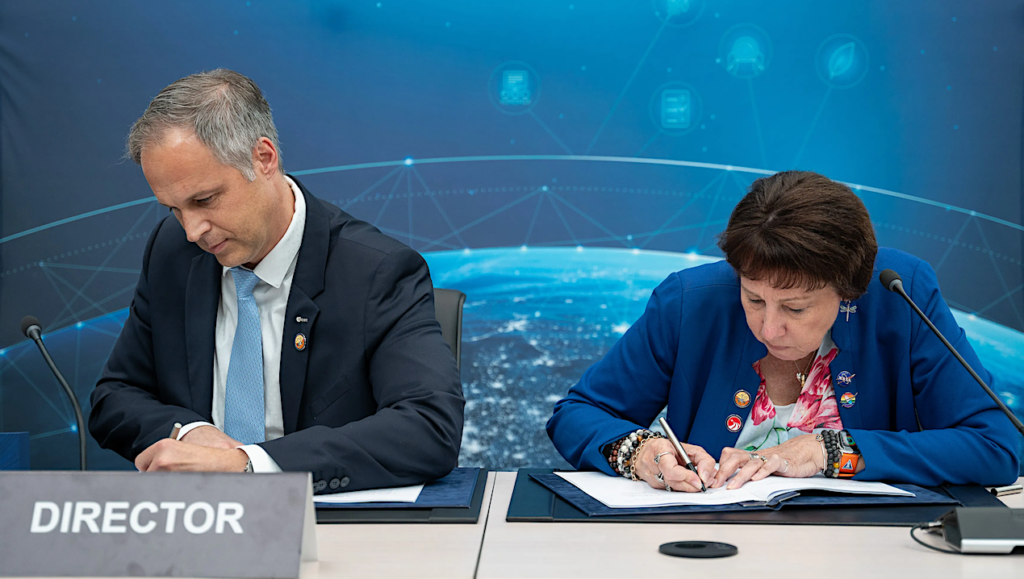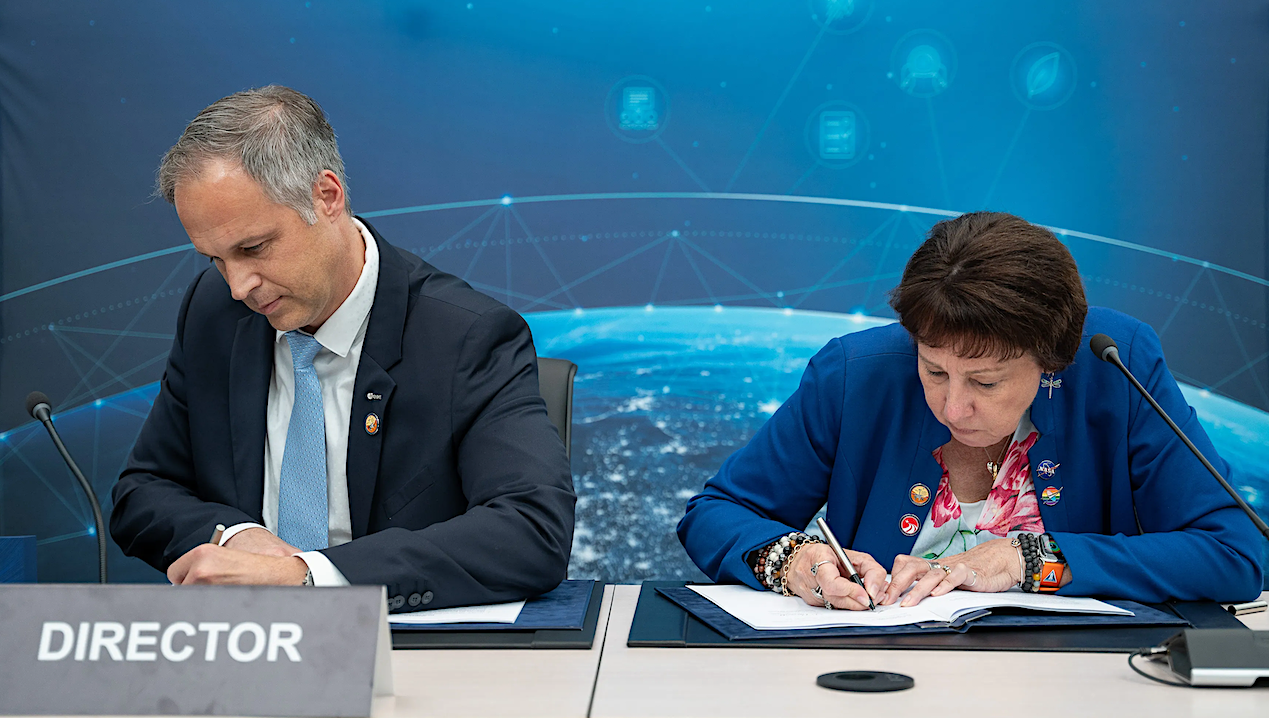NASA, ESA, Rosalind Franklin rover, ExoMars mission, Mars exploration, ancient life on Mars, Mars drilling technology, space collaboration, Mars Organic Molecule Analyzer, international space mission, 2028 Mars mission
Discover the groundbreaking collaboration between NASA and ESA on the ExoMars Rosalind Franklin rover mission, set to launch in 2028. This historic mission aims to search for signs of ancient life on Mars with advanced drilling technology and international scientific cooperation.

In a landmark collaboration, NASA and the European Space Agency (ESA) have signed an agreement to advance the ExoMars Rosalind Franklin rover mission, slated for launch in 2028. This ESA-led mission aims to search for signs of ancient life on Mars, furthering our understanding of the Red Planet’s history and its potential to have harbored life.
The Memorandum of Understanding
The newly signed memorandum of understanding between NASA and ESA underscores the significant contributions that NASA will make to this mission. Specifically, NASA’s Launch Services Program will secure a U.S. commercial launch provider for the Rosalind Franklin rover. Additionally, NASA will supply critical components such as heater units and parts of the propulsion system required for the rover’s safe landing on Mars.
Unique Drilling Capabilities
One of the most exciting features of the Rosalind Franklin rover is its advanced drilling system. This system is designed to drill up to 6.5 feet (2 meters) below the Martian surface, allowing the collection of ice samples that have been shielded from the planet’s harsh surface radiation and extreme temperatures. This depth is unprecedented in Mars exploration and holds the promise of accessing well-preserved samples that could contain vital clues about past microbial life.
“The Rosalind Franklin rover’s unique drilling capabilities and onboard sample laboratory have outstanding scientific value for humanity’s search for evidence of past life on Mars,” stated Nicola Fox, associate administrator of the Science Mission Directorate at NASA Headquarters in Washington. “NASA supports the Rosalind Franklin mission to continue the strong partnership between the United States and Europe to explore the unknown in our solar system and beyond.”
International Cooperation
This mission exemplifies international cooperation in space exploration. Besides the collaboration between NASA and ESA, the mission also involves contributions from the German Aerospace Center (DLR) and the French space agency CNES (Centre National d’Études Spatiales). NASA is contributing key components to the rover’s primary scientific instrument, the Mars Organic Molecule Analyzer (MOMA). MOMA will analyze the Martian soil samples for organic molecules, which are the building blocks of life.
Technological Contributions
NASA’s collaboration with the U.S. Department of Energy is another crucial aspect of this mission. The Department of Energy will provide lightweight radioisotope heater units for the rover. These heater units are essential for maintaining the operational temperature of the rover’s instruments in the cold Martian environment. The use of radioisotope power sources is a proven technology in space missions, ensuring that the rover can function effectively in the frigid conditions of Mars.
The Rosalind Franklin Rover
Named after the pioneering British scientist Rosalind Franklin, who made significant contributions to the understanding of the molecular structures of DNA, RNA, viruses, coal, and graphite, the rover is a symbol of international scientific collaboration and innovation. The ExoMars mission, of which the rover is a part, represents the ESA’s ambitious efforts to explore Mars. This mission is crucial for addressing one of the most profound questions in science: is there, or was there, life on Mars?
Mission Goals
The primary goal of the Rosalind Franklin rover is to search for signs of ancient life on Mars. By drilling below the surface, the rover aims to retrieve samples that have been insulated from surface conditions, potentially preserving organic materials. The onboard laboratory will analyze these samples, looking for biomarkers or chemical signs of life.
Additionally, the mission will study the Martian environment and geology to understand the planet’s history and climate. These investigations will provide insights into Mars’s potential to support life and guide future missions, including potential human exploration.
A Step Forward in Mars Exploration
The collaboration between NASA and ESA on the Rosalind Franklin rover is a significant step forward in Mars exploration. By combining resources and expertise, the two agencies are enhancing the mission’s capabilities and potential for groundbreaking discoveries. The technological innovations and international partnerships involved in this mission are paving the way for future explorations and deepening our understanding of the Red Planet.
Conclusion
The partnership between NASA and ESA in the ExoMars Rosalind Franklin rover mission highlights the importance of international cooperation in space exploration. This mission is not only a scientific endeavor but also a testament to what can be achieved when nations work together towards a common goal. As we look forward to the launch in 2028, the scientific community and the world at large eagerly anticipate the discoveries that the Rosalind Franklin rover will bring. These findings will not only enhance our knowledge of Mars but also bring us closer to answering the age-old question of whether we are alone in the universe.
Read More-
- NASA X-59: Advances Toward First Flight with Successful Milestone Review
- NASA Plan to Build a Railway System on the Moon
- NASA Mobile Launcher 2: Engineering the Future of Lunar Missions
- How NASA Tracked the Most Intense Solar Storm in Decades: A Comprehensive Analysis










